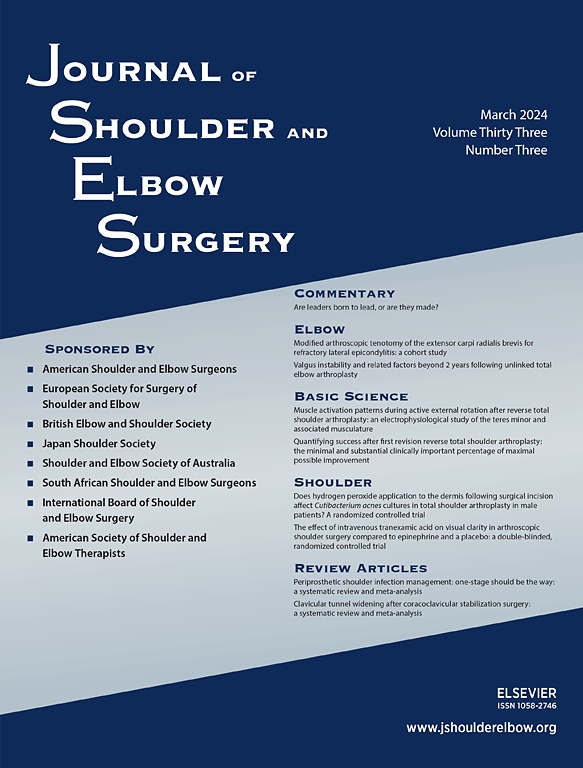
Reduction of anterior shoulder dislocation: Milch technique results in high success rate

Reduction of anterior shoulder dislocation: Milch technique results in high success rate
Milch versus Stimson technique for nonsedated reduction of anterior shoulder dislocation: A prospective randomized trial and analysis of factors affecting success
J Shoulder Elbow Surg. 2012 Nov;21(11):1443-9. doi: 10.1016/j.jse.2012.01.004. Epub 2012 Apr 18.Synopsis
60 patients with anterior shoulder dislocation requiring nonsedated reduction were randomized to undergo the Milch technique or Stimson technique. The results of the study indicate that the success rate and time to achieve reduction without sedation were superior for the patients that underwent the Milch technique when compared with the patients that underwent the Stimson technique. The Milch technique becomes a reasonable management alternative to reduction with sedation when early implementation of reduction, low pain levels at presentation, and oral pain medication are successfully combined.
Was the allocation sequence adequately generated?
Was allocation adequately concealed?
Blinding Treatment Providers: Was knowledge of the allocated interventions adequately prevented?
Blinding Outcome Assessors: Was knowledge of the allocated interventions adequately prevented?
Blinding Patients: Was knowledge of the allocated interventions adequately prevented?
Was loss to follow-up (missing outcome data) infrequent?
Are reports of the study free of suggestion of selective outcome reporting?
Were outcomes objective, patient-important and assessed in a manner to limit bias (ie. duplicate assessors, Independent assessors)?
Was the sample size sufficiently large to assure a balance of prognosis and sufficiently large number of outcome events?
Was investigator expertise/experience with both treatment and control techniques likely the same (ie.were criteria for surgeon participation/expertise provided)?
Yes = 1
Uncertain = 0.5
Not Relevant = 0
No = 0
The Reporting Criteria Assessment evaluates the transparency with which authors report the methodological and trial characteristics of the trial within the publication. The assessment is divided into five categories which are presented below.
3/4
Randomization
3/4
Outcome Measurements
4/4
Inclusion / Exclusion
4/4
Therapy Description
4/4
Statistics
Detsky AS, Naylor CD, O'Rourke K, McGeer AJ, L'Abbé KA. J Clin Epidemiol. 1992;45:255-65
The Fragility Index is a tool that aids in the interpretation of significant findings, providing a measure of strength for a result. The Fragility Index represents the number of consecutive events that need to be added to a dichotomous outcome to make the finding no longer significant. A small number represents a weaker finding and a large number represents a stronger finding.
Why was this study needed now?
The shoulder can be reduced using simple techniques in the emergency department. Many reduction techniques exist, but the optimal treatment has yet to be determined. The optimal technique should be one that is quick and easy to perform, pain free, require little medication, cause no additional injury to the shoulder, and reduce the burden of treatment costs. This study aimed to determine whether there is a difference in success rate between the Milch technique and Stimson technique among patients with anterior shoulder dislocation.
What was the principal research question?
Is there a difference in success rate between the Milch technique and Stimson technique among patients with anterior shoulder dislocation?
What were the important findings?
- The first reduction attempt was successful in 29 of the 35 patients (82.8%) that underwent the Milch technique and 7 of the 25 patients (28%) that underwent the Stimson technique (p<0.001).
- The reason for failure in the first attempt for the 6 out of 35 patients (17.2%) that underwent the Milch technique was due to pain and the need for sedation. The leading cause of failure in the first attempt for the 18 out of 25 patients (72%) that underwent the Stimson technique was request to discontinue the treatment due to the inconvenience of the prone position.
- The mean reduction time for the patients that underwent the Milch technique was 4.68 minutes, whereas the mean reduction time was 8.84 minutes for the patients that underwent the Stimson technique (p<0.007).
- Pain was not significantly different between the patients that underwent the Milch technique and the patients that underwent the Stimson technique.
- The 3 factors that affect success rate were reduction technique, the time interval between dislocation and first reduction attempt, and the level of pain on admission to the emergency department with an odds ratio of 0.037 in favor of the Milch technique, 7.16 in favor of short time, and 1.81 in favor of low levels of pain.
What should I remember most?
The data suggests that the patients that underwent the Milch technique for reduction of an anterior shoulder dislocation achieved a significantly higher first success rate and a significantly lower mean reduction time than the patients that underwent the Stimson technique.
How will this affect the care of my patients?
The study suggests that the Milch technique may be a reasonable technique for reduction of an anterior shoulder dislocation without sedation. Early implementation of reduction, experiencing low pain levels at presentation, and oral pain medication are positive predictors of a successful reduction. Further research using larger sample sizes is required to determine the external validity of the results presented in this study. Future studies need also to evaluate differences in both techniques with intraarticular analgesia.
Learn about our AI Driven
High Impact Search Feature
Our AI driven High Impact metric calculates the impact an article will have by considering both the publishing journal and the content of the article itself. Built using the latest advances in natural language processing, OE High Impact predicts an article’s future number of citations better than impact factor alone.
Continue



 LOGIN
LOGIN

Join the Conversation
Please Login or Join to leave comments.